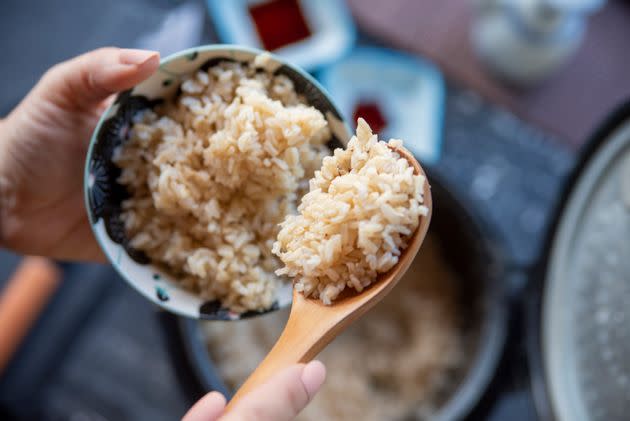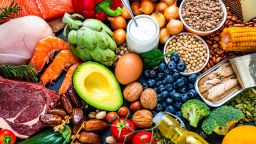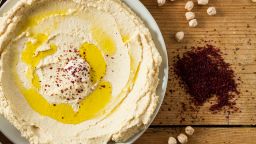Tito Boy Restaurant is more than a place to find comforting Filipino food. Over the last year, it’s also become an important site of inter-cultural exchange.
“People come here because they want to share stories, they want to talk about their culture,” co-owner Jackie Wild says. “You’ll see a Filipina with her group of non-Filipino friends and she’ll be teaching them about all the dishes — it’s really, really fun and really, really sweet.”

Jackie Wild owns Tito Boy, a Filipino restaurant in South St. Vital, with her father, Agustin Doming. (MikeDeal / Winnipeg Free Press)
Wild and her father, Agustin Doming, opened the small St. Vital eatery last October. The venture was the realization of a lifelong dream for Doming, who trained as a chef before pursuing a slightly more stable career in health care. In 2021, he made a long-distance return to the industry while helping family members back in the Philippines open a restaurant from afar.
“They opened up a very small takeout counter; it was very modest, very humble, but I saw the spark reignite in his eyes,” Wild says. “He was just so excited about the work he was doing.”
It was time to start cooking closer to home.
The father-daughter duo started working on Tito Boy — which is a reference to Doming’s familial nickname — during a transitional time in their respective lives. He was getting ready to retire from a 16-year career as a health-care aide and she was in the midst of a maternity leave with her second child. While neither had run a restaurant before, they both had transferable skills.
Tasting Notes
Tito Boy Restaurant, 730 St. Anne’s Rd.
Visit titoboys.com for more information
While the interior of Tito Boy is calm and minimalistic — white walls, natural wood furniture with pops of lush green artwork — the menu is a vibrant rainbow.
While the interior of Tito Boy is calm and minimalistic — white walls, natural wood furniture with pops of lush green artwork — the menu is a vibrant rainbow.
Purple is the dominant tone. Ube, a deep purple yam popular in the Philippines, appears in main dishes, desserts and drinks. Made with yam-infused glutinous rice flour, the violet-hued Ube Mochi Waffles ($14) are dense and chewy. Appearing under the matamis (or sweets) section of the menu, the waffles themselves aren’t particularly sweet, leaving room for sugary toppings of cookie crumbs and sweetened condensed milk sauce. Complete the lilac experience with an Ube Iced Latte ($5.25).
The goal at Tito Boy is to offer a mix of fusion and traditional food. Pancit Bihon ($16) is a staple of the latter. It’s an umami-rich dish made with a base of rice noodles cooked in a blend of savoury soy and oyster sauces. Tito Boy’s entry in the canon comes in a substantial serving piled high with brightly coloured and lightly stir-fried carrots, cabbage and snow peas.
The barbecued pork Silog Platter ($14) is another Filipino mainstay. Served with a hearty skewer of charred pork slathered in a sweet barbecue sauce, the dish includes sticky garlic rice, pillowy fried eggs and a small cucumber tomato salad. The accompanying atchara — a lemongrassy pickled papaya salad — is a standout condiment that cuts the overall richness of the dish. Don’t sleep on the bottle of spiced vinegar adorning each table.
Tasting Notes is an ongoing series about Winnipeg restaurants, new and old, meant to offer diners a taste of what’s on the menu.
“Throughout my upbringing, (my parents) opened a cleaning business and ran a corner store in the West End — that entrepreneurial itch was always deeply ingrained in their DNA,” says Wild, who is the president of the Manitoba Filipino Business Council. “And I’ve been really lucky to be surrounded by some pretty impressive Philippine community members who defied the lack of having intergenerational wealth and were able to create a legacy for themselves and their families.
“I wanted to try that, at least give it a kick at the can,” she adds. “What’s the worst case scenario? You start a business and it fails. At least you tried.”
It’s still early days, but there’s been plenty of reasons to celebrate during the first year in business. Tito Boy has attracted a dedicated following despite its owners’ initial reservations about opening up shop in St. Vital.
“We’re the first (Filipino restaurant) in the south end of the city. It was a huge risk; it was either going to go really, really well or really, really poorly — I didn’t see a middle ground,” Wild says. “But people came out in droves.”

Ube Mochi Waffles — chewy ube-flavoured rice flour waffles finished with ube-infused drizzle. (MikeDeal / Winnipeg Free Press)
Part of that success, she says, is due to the cultural touches served up alongside the food.
Tagalog is present throughout the menu and restaurant. Customers are greeted by the words “kain tayo,” which translates to “let’s eat,” splashed above the central bar. Working at Tito Boy has been language immersion for Wild, who didn’t grow up speaking Tagalog at home.

Jackie Wild puts the finishing touches on a popular drink, the Ube Iced Latte. (MikeDeal / Winnipeg Free Press)
“The second- and third-generation Filipino people are very far removed from their culture. Many of them don’t speak the language anymore because they were assimilated into Canadian culture,” she says. “We all learn from each other; I feel like my Tagalog is so much better now.”
There’s a sungka set — a board game played with shells — stationed in the cosy lounge, and a large wooden fork and spoon hung on the wall, a staple decor item in many Filipino homes, Wild says, laughing. A karaoke machine is ready to be cued up at a moment’s notice.
Tito Boy also offers kamayan dinners daily on request. The communal feasts are a pre-colonial tradition, during which food is served on banana leaves and eaten by hand.

Pork BBQ Silog Platter is a hearty breakfast dish served with pork skewer, aromatic garlic fried rice, crispy fried eggs, atchara and salad. (MikeDeal / Winnipeg Free Press)
“It’s something that a lot of our community still looks forward to doing today because it’s a bonding experience,” Wild says. “And a lot of non-Filipino folks will come in to experience it, too.”
Tito Boy is one of a number of new Filipino businesses, cultural events and restaurants that have cropped up in Winnipeg in recent years. While the city has long been home to the largest concentration of Filipino residents in Canada, Wild says the movement likely has more to do with wealth distribution than population.

Pancit Bihon — thin rice noodles cooked with savoury sauces stir-fried with cabbage, celery, carrots and peas. (MikeDeal / Winnipeg Free Press)
“A lot of Filipino families will send money back home, so they don’t have a lot of extra money saved up to be able to even front an endeavour like this,” she says. “But now you have the emergence of second and third generation people who have accumulated more wealth thanks to the sacrifices their families have made.”

Calamansi Lychee Lemonade (left) and Tamarind Mango Iced Tea. (MikeDeal / Winnipeg Free Press)
The city’s growing Filipino food scene is also benefitting from a shift in culinary perceptions.
“There are some deeply rooted preconceived notions around Philippine food being cheap or lesser than. We do use cheaper cuts of meat, but there’s so much time and care that’s put into marinating and infusing flavours,” Wild says. “People are much more open-minded today.”
At Tito Boy, the owners plan to continue building community through food with special dining events, lumpia-making workshops and take-home food products.
eva.wasney@winnipegfreepress.com
Twitter: @evawasney

Kain tayo! Let's eat! – Winnipeg Free Press - Winnipeg Free Press
Read More
















